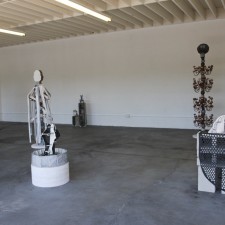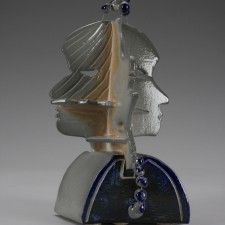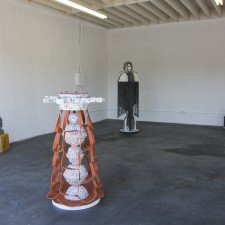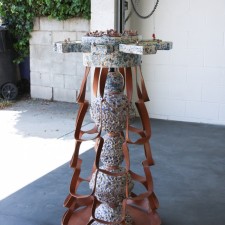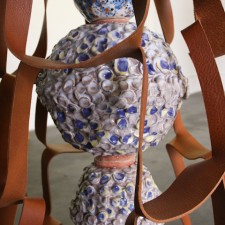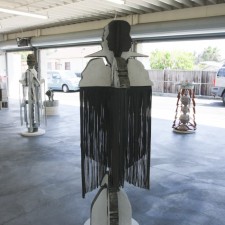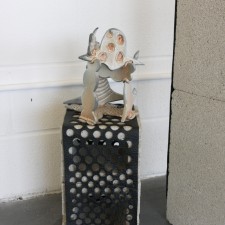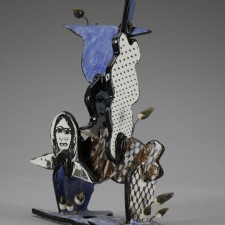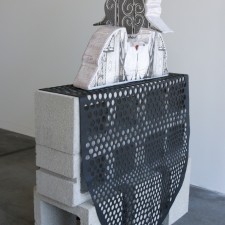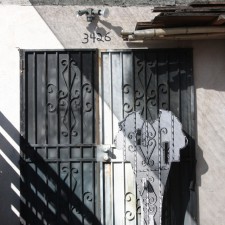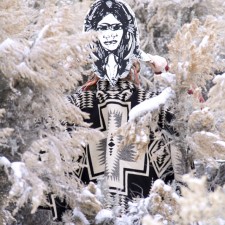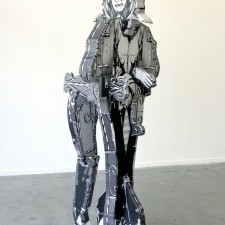Decorative Protection at Emma Gray HQ
April – May 2013

PRESS RELEASE
In Decorative Protection, Bari Ziperstein collapses the female figure by creating connections between the urban environment and decoration, while simultaneously wishing to protect and exalt the role of decoration, in both the arts and society at large. Ziperstein examines how simple objects such as fences and iron window bars relate to the role of the female form in society — how such objects are designed to seduce and repel, arm and disarm. Ziperstein’s totemic ceramic sculptures and photographs are inspired by an ’80s magazine ad for wrought iron window bars. The advertisement, which affirms “not prison looking bars,” navigates the uneasy relationship between domestic security while maintaining a facade of looking pretty. Through form, decoration and outer displays and appearances, the artist examines how the shadow side of the female psyche is asserted.
These sculptures and intimate floor based ceramic tableaus depict flat planes of fragmented body parts of stacked arms, three sided faces, shelves that transform into busts, and a Buddhist Medicine Wheel comprised of legs and lady pumps. In some aspects, the exaggerated cloak of often-grotesque decoration eclipses simple prettiness to morph into the form of a quasi shamanic warrior-ess. Her dramatic presence has integrated her darker nature into her form, producing a creature both multi faceted and beguiling. The combination of leather and ceramic owes as much to mythic Roman warriors as it does a Greek Goddess, not to mention modern day female pop icons, whose outfits also actively seduce and repel. These artworks dramatically transform and shift when viewed from various angles.
The human scale sculptures in Decorative Protection are suggestive of historic wooden totem poles, which were erected to represent the protective spirits of ancestors, record history, oral traditions and marks the boundaries of a village. Historically the depicted totem animals (here replaced by figurative ladies) reveal supernatural animals or animal-human combinations, which can shape shift between human and animal worlds. This fragmented surrealism in Ziperstein’s sculptures allows a new mythic figure to emerge that has adapted and marks a new territory in our urban environment.


